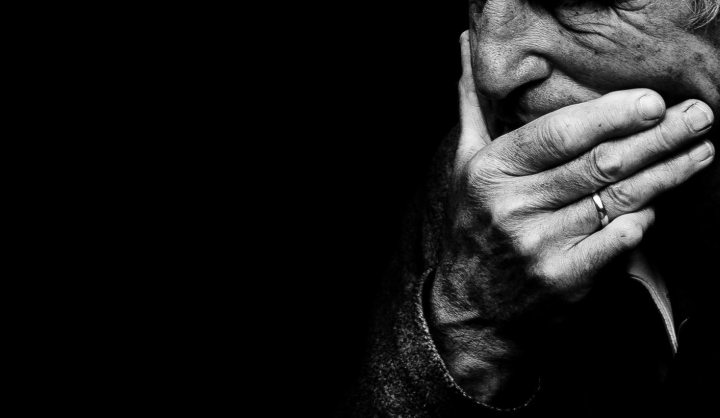Maverick Life, South Africa
Invisible perpetrators, invisible victims, lasting scars

What would happen if you were raped or beaten by a female perpetrator? Would you report it to the police? Receive trauma counselling? Tell your family? Think about it, really think about it. Because, according to some first-person narratives, doing any of these things won’t go as smoothly as you might expect. By MARELISE VAN DER MERWE.
“Perhaps the most disturbing effect of my rape … was how people treated my story. Those I confided in seemed completely unimpressed by the seriousness of the matter — from my friends, to my therapist, to my then-boyfriend. These people are generally progressive and compassionate people, but they couldn’t seem to grasp the terrible brutality of the rape because my rapist was a woman.”
The narrator is telling her story in a feature entitled “Another woman raped me and nobody cared” . The victim’s story is more common than you might think. Despite an increase in reportage, there is still a deep-seated denial about abuse by female perpetrators that frequently leaves its victims minimised, ignored, re-traumatised. In the case of the above narrator, her rape was variously described as a “misunderstanding” and “girl drama” by people who were well aware that she had been assaulted.
“I have been sexually assaulted by both a man and a woman, and my experiences were equally terrifying, yet I received much less support after a woman assaulted me,” she writes. “No one could even register my experience as important.”
The subject of female abusers is a broad one. Depending on what type of abuser one is referring to, the statistics differ wildly. Female child molesters are significantly less prevalent than male ones*; female perpetrators of intimate partner violence, however, are almost as prevalent as male ones (statistics below). The jury is still out on child abusers, partly because the definition of child abuse is so varied. When one investigates female sex offenders more broadly, one can be talking about perpetrators who target those of the same sex or a different sex. In both cases, data is patchy, but for different reasons. In the former because it’s often minimised, and in the latter because it’s often underreported.
Speaking to Daily Maverick, Clinton* said the woman who sexually assaulted him also held him hostage emotionally and financially. Clinton, now in his thirties, thought he had struck gold when he found an affordable place to live in a prohibitively expensive university town. He didn’t know at what cost he would actually live there. The landlady, he says, developed a fixation with him. First she became angry if he brought girls home, until he eventually felt too afraid to do so. “I would be washing the dishes and she would come and fondle me,” he says. “As a boy of 13 or 14 you dream about a 40 year-old woman seducing you, but when you’re trapped in that situation, it’s very different.
“One night I felt the door opening. She got on top of me and pinned me. She forced me. Immediately I felt like the antichrist. From then on, she had absolute control.
“I always judged women for what I saw as financial serfdom. But I became the serf character. She knew that. If she came home I would put my light off and she would come in and say, ‘I know you are not sleeping. I’m coming to have my fun now.’”
Not resisting did not keep her calm. “There’s this feeling that sex is always enjoyable for guys, but it’s not. I wouldn’t get aroused and that would make her mad. She turned into Glenn Close. She thought she had marked me because she took my virginity.”
One night, when he did resist, she smashed his windows. “I heard her lifting her boots and she kicked through the glass. It looked like I was covered in Britney Spears’ body glitter. Physically, she had complete control.”
Clinton suffered lasting trauma. “In the fullness of time, it burned me quite badly. All my subsequent intimate relations have not been enjoyable.”
Why didn’t he move out? Partly money, he says. He’d fought for a place at this university, and mid-year he couldn’t find anywhere else he could afford. He also didn’t feel he could explain to anyone why he was moving. “I felt very emasculated as the poor kid,” he says.
He was also raised never to touch a woman in anger. “You can’t physically protect yourself as a male,” he says. “As a guy, you must just cope.
“It’s a cycle of abuse thing. It’s big for me, with my old man and my sister. And I was sexually abused as a child by another family member. I’m functional, but my intimate life is a disaster. I overcompensate, then I recoil. I say ‘you are a woman, you are going to abuse me’.”
Societal reactions to female abusers are varied and tend to depend on who the victims are. In the case of female-on-female abuse there is, as for the anonymous writer above, sometimes the assumption that it’s lesbian experimentation gone wrong, or that victim and perpetrator were somehow in a fair fight. In the case of female-on-male abuse, there can be the insinuation that the man is a weakling, he let it happen, or in the case of sexual abuse, that as a man, he should always want sex – therefore his response to rape should be that he got lucky.
On the latter point, it’s not unusual for female sex offenders to be sexualised to some degree. In South Africa, the infamous Advocate Barbie (Cezanne Visser), was sent to jail in 2010 for child molestation with her partner, Dirk Prinsloo. Much media attention was given to her blonde hair, size EE fake breasts and the salacious details of her and Prinsloo’s sex life, with Visser herself apparently buying into the mythology, describing Barbie as “physical perfection”. Prinsloo never drew the same level of public fascination as his partner, who claimed that she had been a victim of his coercion.
Worldwide, some female sex offenders draw a kind of cult following. A quick Google search on “female sex offender”, for example, draws multiple results for lists such as “Top 10 Hottest Female Sex Offenders”; “Top 10 Sexiest Sex Offender Teachers”, and so forth. One blogger writes: “I don’t see anything wrong with female sex offenders. The only time where it would be wrong is if the boy is under the age of 12 or 13. Otherwise female sex offenders or female rapists are oxymorons… Women can’t force themselves on young men…
“Shit, if my 8th grade science teacher, Ms Metler, forced herself on me, I would lay back and pretend to struggle while she weakly pinned me down and let her ‘rape’ the shit out of me. To all the ‘victims’ who told the police, what the fuck were you thinking? Tell your friends instead. Post that shit on your Facebook, be proud of yourself. What the hell is wrong with you?”
There has been some development in the tendency to underreport. By 2011 the BBC reported a 150% increase in intimate partner violence convictions against women in the previous five years. “Research spanning over 40 years has… consistently found that men and women self-report perpetrating domestic violence at similar rates,” Nicola Graham-Kevan wrote in the Guardian. Men’s activist group, Parity, reported, meanwhile, that up to 40% of cases of domestic violence were perpetrated against men. In the US, too, statistics are revealing: 1 in 3 women and 1 in 4 men have been victims of physical violence by an intimate partner within their lifetime; 1 in 5 women and 1 in 7 men have been victims of severe physical violence by an intimate partner in their lifetime.
In South Africa, statistics also tell a story. Professor Soraya Seedat, Director of the Post-Traumatic Stress Disorder Unit at Stellenbosch University, says a representative sample of cohabiting men and women from all provinces in South Africa, which specifically compared men and women, found that 25.2% of women reported behaving violently towards their male partners, while only 20.9% of men indicated that they had been the victims of violence. “One interpretation for this discrepancy is underreporting by men,” she says. Other researchers, however, have underlined that male control over women remains prevalent and that continued tolerance of violence against female partners is far too common. “Violence perpetrated by women against their male partners is arguably deemed inappropriate or shameful,” Seedat points out.
Of course, not all the victims of female perpetrators are men in their age category. Some are children, some are other women, some are the elderly. Female killers are often caregivers, mothers or nurses. Often the children of female abusers bear the brunt of a society that tends to favour the maternal stereotype – the belief that it is better for children to be raised by mothers than fathers. Jenna, 33, bears testimony to this. “When my parents divorced, my mother barely even had to justify why she should get custody. We were just given to her. You know, because women are just born to be moms. It was the beginning of 15 years of hell. We were lucky if she fed us. She and her male friends took turns molesting us. But when we were acting up we were ‘problem’ children. She told every psychologist and teacher that we were having problems because we had an absent father. It was all a load of bullshit and every single one of them believed her. People still do.”
Sindi, 42, was sexually, psychologically and physically abused by her mother, suffering rape, beatings and horrific torture, the details of which she did not wish to have published. She is lucky to be alive, she says. “The fact that my abuser was my mother made it much harder [to tell anyone],” she says. “Such abuse is the antithesis of motherhood. Motherhood is associated with nurturance, love, care, wanting the best for your child. Sexual abuse is a violation, perverted and sadistic, the most devastating of intrusions.” Sindi never told anyone until she was well into adulthood; there are still details she feels unable to relate.
“There is more disbelief relating to female perpetrators,” she says. “Perhaps more pathologising and revulsion, too. Men who abuse at least more or less fit into a patriarchal society at its extremes. There is no societal space for these women. I suspect they are brought to justice less often. If your abuser is female, nobody wants to know.”
In an entirely different category, domestic violence in LBGT relationships often goes underreported, particularly in homophobic communities. Chanelle Albertyn, who wrote her MA thesis in gender studies on intimate partner violence in lesbian relationships, says a key problem is that women and female sexuality are frequently belittled. “Minimising abuse is problematic in lesbian domestic violence, because so many myths exist, such as ‘women aren’t violent’, or that it’s not abuse if it’s between people of the same gender,” she says. “Further, some LBGT people have internalised society’s prejudices against them and believe that they deserve to be violated.” Albertyn also believes that resources and information for both perpetrators and victims in same-sex Intimate Partner Violence (IPV) situations is limited.
“LBGT people encounter numerous barriers when seeking help, as they may fear rejection and stigma,” she says. “Victims feel they will not be taken seriously, and experience isolation, as well as ridicule from the police, judicial system and voluntary agencies. They are less likely to report abuse and more likely to stay with their partner because of homophobia, heterosexism, and ignorance in the community regarding domestic violence as well as homosexuality.”
The anonymous rape survivor above believes her rape was minimised because people didn’t believe sex between women was “real”. “Since women are deemed incapable of sexual agency … how could they be capable of violent sexual assault?” she writes.
“When lesbians report abuse they often suffer secondary victimisation; police seldom follow domestic violence procedures and their responses are often heterosexist and homophobic,” Albertyn says. “They may not acknowledge the severity of the situation and fail to arrest the perpetrator.” This is a significant problem, she adds, considering some researchers believe IPV is even more prevalent among lesbians than among heterosexual couples.
But isn’t there a reason for all this underreporting? Isn’t it true that, as Seedat pointed out above, violence against women is still perceived as more acceptable than violence against men? Isn’t it better, then, to make a bigger deal about violence against women than violence by women? Not exactly, says Seedat. First, doing that can potentially stand in the way of those women who are still the victims of gender-based violence.
“Both victimisation and perpetration has been shown to be transgenerational. There is a cyclical pathway of violence victimisation and perpetration that exists in many countries in the world,” she says. “Further, couples affected by bi-directional violence (male-to-female and female-to-male) are at particularly high risk of developing psychiatric disorders.”
Moreover, exposure to violence in the home is extremely risky for a child and is, according to Seedat, “one of the most potent risk factors for partner violence, both for victimisation and perpetration, in men and women”. In other words, it doesn’t matter who the perpetrator is. Violence begets violence.
Research has suggested, says Seedat, that children exposed to violence in the home view violence as an acceptable means of conflict resolution and a normative aspect of intimate relationships, and can later form a model for abuse in adulthood. Result: more violence.
And who is abusing? Among men, says Seedat, low income is positively associated with perpetrating violence, but men with lower incomes are also at greater risk for victimisation. “Studies have also found that abuse is more common in relationships where that female partner earns more or is better educated than the male partner,” she says.
“Individual, relationship, community and societal factors all play a role. The risk factors are in many respects similar for men and women,” she adds. For example, both men and women who perpetrate partner-violence tend to be younger and from lower socioeconomic groups. Alcohol and drug problems, as well as pre-existing psychiatric disorders, are also factors.
Then there’s gender inequality, which, it seems, hurts everyone. “A belief in strict gender roles, for example, male dominance and aggression and a desire for power and control, as well marital instability and social isolation, also play a role,” says Seedat. “In many studies of partner violence conducted in many parts of the world, attitudes that are unfavourable to women’s equality and sexual autonomy are associated with the perpetration of violence.”
The take-home message seems to be that where there is an imbalance, ultimately everybody – even those who appear at the top of the food chain – end up limping. In the most insidious way, gender inequality has created an impossible situation for the victims of female perpetrators; a system that is terrifyingly easy to abuse. And where resilience, for survivors, means meeting impossible standards. Where the agency of everyone who isn’t a heterosexual male is undervalued, their potential as adversaries is also underestimated.
Perhaps Clinton put it best. “As a guy you can’t fight and you can’t report it. There’s this attitude around guys that if there’s psychological damage you can fuck it away later. But it’s not like that. It’s your sense of self that is unbalanced; that moers you. They take that part of you.” DM
* For brevity, ease of reference and simply an absence of data, DM is not listing all variations of self-identified genders in this feature. For the most part, studies cited refer to biological sex.
Photo by Neil Moralee via Flickr.
















 Become an Insider
Become an Insider